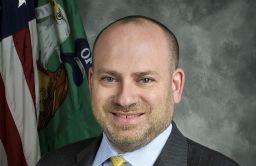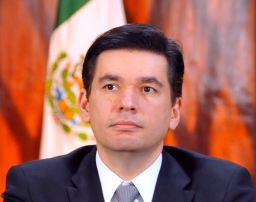Editor’s Note: Daniel L. Glaser is the assistant secretary for terrorist financing at the U.S. Department of the Treasury and Fernando Aportela is the deputy finance minister at Mexico’s Secretariat of Finance and Public Credit. The views expressed are their own.
Story highlights
More than half U.S. states count Mexico as one of their top three export markets, writers say
Essential that bad actors cannot hide behind a façade of legitimate activity, they argue
The U.S.-Mexico border is alive with activity. Every minute more than $1 million in goods and services are traded back and forth on average. Indeed, Mexico exports more to the United States in goods and services in just over a month than it does in a year to the entire European Union. And more than half the U.S. states count Mexico as one of their top three export markets.
But the vibrant economic relationship that exists between our two countries also creates vulnerabilities, and, therefore, substantial challenges. Illicit actors operating in both our nations seek to abuse our close ties to launder their proceeds through our financial systems. If left unchecked, this abuse has the potential to cast suspicion on legitimate business activities and ultimately to affect the growth of our economies.

The issues of money laundering and other illicit activity will no doubt be discussed at this weekend’s meeting of G20 leaders, which will be attended by both the United States and Mexico. But the United States and Mexico have already been working together closely to increase financial transparency and isolate illicit transactions from our economies.
For example, we recently met in Mexico City to analyze our ongoing cooperation on cross-border illicit finance issues, and engaged extensively with leading banking supervisors, financial regulators, and the private sector. This close cooperation by U.S. and Mexican authorities protects the integrity of our financial systems and supports the efforts of the law enforcement agencies on both sides of our shared border.

Our goal is simple: to ensure that our integrated financial system creates a hostile environment for those who would abuse the system, while remaining efficient at facilitating legitimate transactions. The integration of our financial systems increases the competitiveness in the North American region, which is the shared vision of the U.S. and Mexican governments.
How can we achieve this goal?
It is essential that we ensure that bad actors cannot hide behind a façade of legitimate activity. Financial institutions must know their customers and be able to measure the risks associated with particular clients or types of business. Greater transparency helps shine more light on illicit activity and denies bad actors the opportunity to hide behind legitimate businesses.
In this respect, the U.S. Treasury and Mexico’s Finance Ministry have taken a number of steps to increase financial transparency.
First, we are creating mechanisms to increase the flow of financial information back and forth across the border. At the end of last year, Mexico amended its regulations to provide a mechanism under the law, which allows Mexican banks to share transaction-related information with their foreign counterparts. This effectively allows U.S. and Mexican banks to talk to each other and share data about their customers, subject to appropriate protections, in order to better identify and manage risk and ensure the ongoing flow of legitimate capital across our shared border.
Second, we are making it easier in the United States to identify the beneficial owner of a bank account – the person who actually controls the account. Last year, the U.S. Treasury proposed a new regulation that would require U.S. banks and other financial institutions to identify and verify the beneficial owner of new accounts. U.S. President Barack Obama’s 2016 budget includes a proposal that would require all companies created in the United States to disclose beneficial ownership information through a routine tax filing when they are formed.
Third, we are generating more information and controls on U.S. dollar transactions in Mexico. In 2010, Mexico instituted restrictions on the ability of customers to deposit U.S. cash dollars into Mexican banks, thereby making it more difficult for illicit actors to abuse the system. In September 2014, as instructed by Mexican President Enrique Peña Nieto, Mexico’s Finance Ministry allowed larger deposits of U.S. dollars in Mexico from vetted businesses in exchange for more information from the depositor. This change should help support licit commerce by giving legitimate Mexican businesses better access to the Mexican banking system, while enhancing Mexico’s ability to monitor U.S. dollar transactions.
Finally, Treasury and Mexico’s Finance Ministry have worked together to address concerns about the lack of transparency in the movement of cash across the U.S.-Mexico border by armored car services and other transporters of currency. One concrete step in this direction has been enhanced reporting to Treasury of such activity at the San Ysidro and Otay Mesa border crossings in California. Recently, this provision was expanded to include south Texas.
Combating illicit actors and stemming the flow of their proceeds through our financial systems is a challenge, but one the United States and Mexico are facing together. We are, and will remain, united in our effort to shield our financial systems from illicit financial actions and promote greater financial transparency.
Join us on Facebook.com/CNNOpinion.
Read CNNOpinion’s Flipboard magazine.
